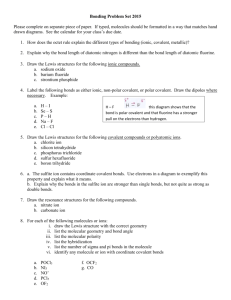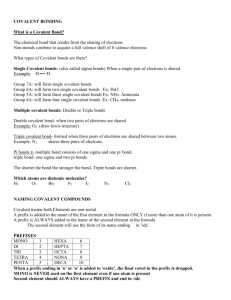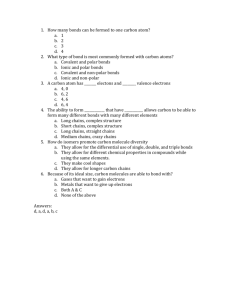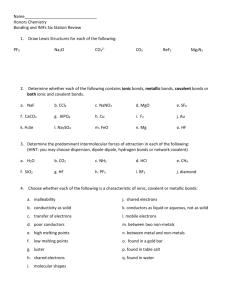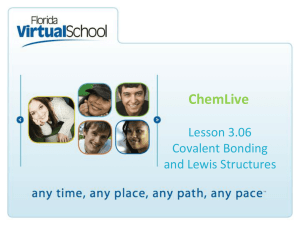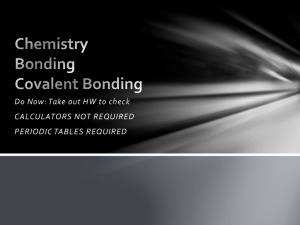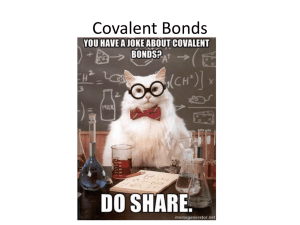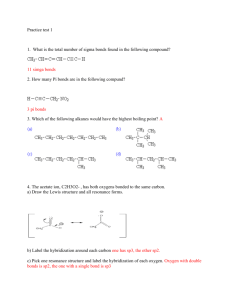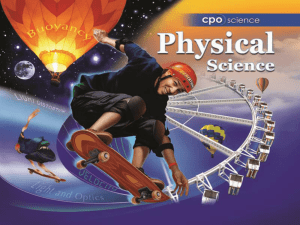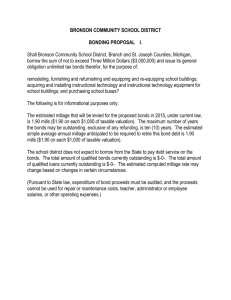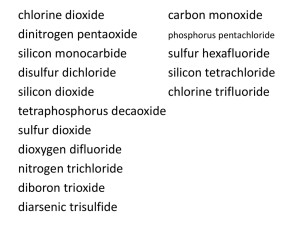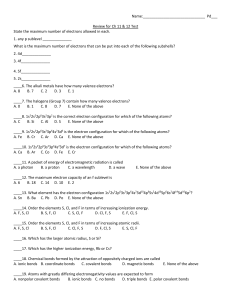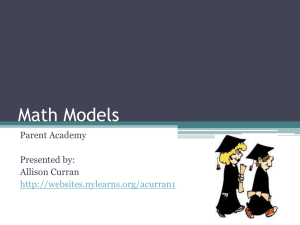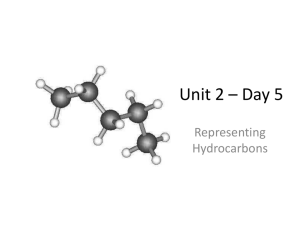Daily Science pg. - EducatorPages.com
advertisement
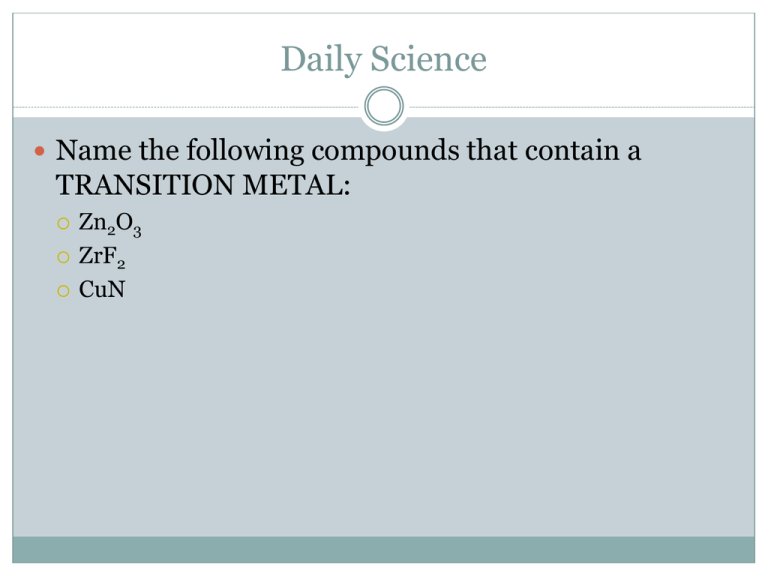
Daily Science Name the following compounds that contain a TRANSITION METAL: Zn2O3 ZrF2 CuN Metallic and Covalent Bonds PG. 53 Metallic Bonds Between a metal and a metal Outer energy levels form a ‘sea of electrons’ High melting and boiling points Good conductors Can make alloys (mixture of elements that have metallic properties) Ex. Brass and bronze Covalent Bonds Non-metal and non-metal Valence electrons are shared Form molecules (2 or more atoms covalently bonded) Use Lewis Structures to show covalent bonds Lewis Structures and Covalent Bonding The shared electrons are called bonding pairs Unshared electrons are called lone pairs Single bonds in a Lewis structure are called sigma bonds (σ) Double and triple bonds are called pi bonds (π) When bonds are broken they either release energy or take in energy Exothermic- energy is released (feel heat) Endothermic- Energy is absorbed ( feels cold) Naming Covalent Bonds Name the first element first using the whole name If there is only one of the element name is regularly If there is more than one of the element use a prefix The second element ALWAYS gets a prefix and the ending drops and you add –ide Neither one is capitalized Number of atoms Prefix 1 mono- 2 di- 3 tri- 4 tetra- 5 penta- 6 hexa- 7 hepta- 8 octa- 9 nona- 10 deca- Examples CCl4 As2O3 CO SO2 NF3 Naming Acids Always has a Hydrogen attached to it and is always dissolved in water Naming binary acids: Only 2 elements Has a hydrogen atom Hydro- element or polyatomic ion- ic acid Naming oxyacids: A polyatomic ion that contains an oxygen If the ion ends in –ate change it to –ic If the ion ends in –ite change it to –ous Examples HBr HCN HNO3 HNO2

